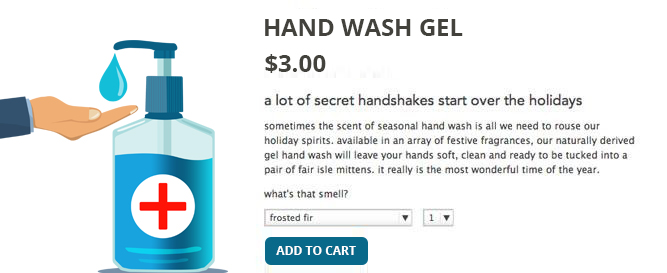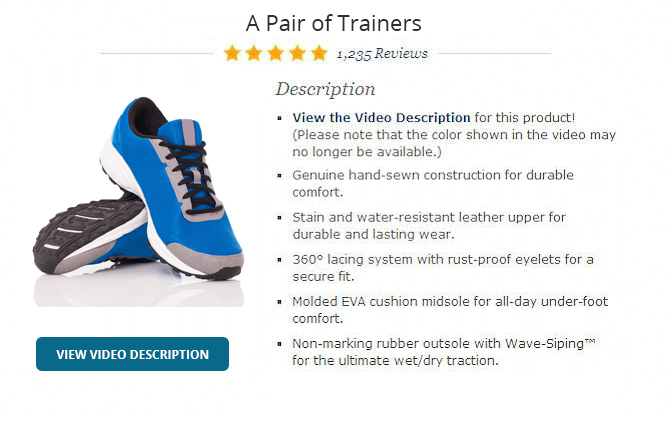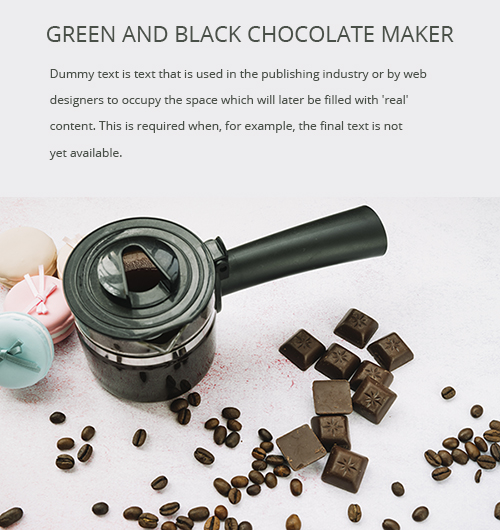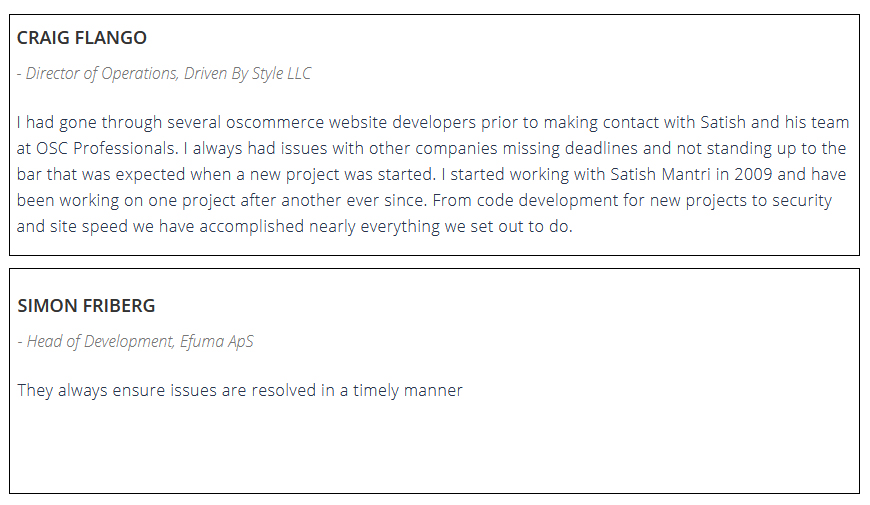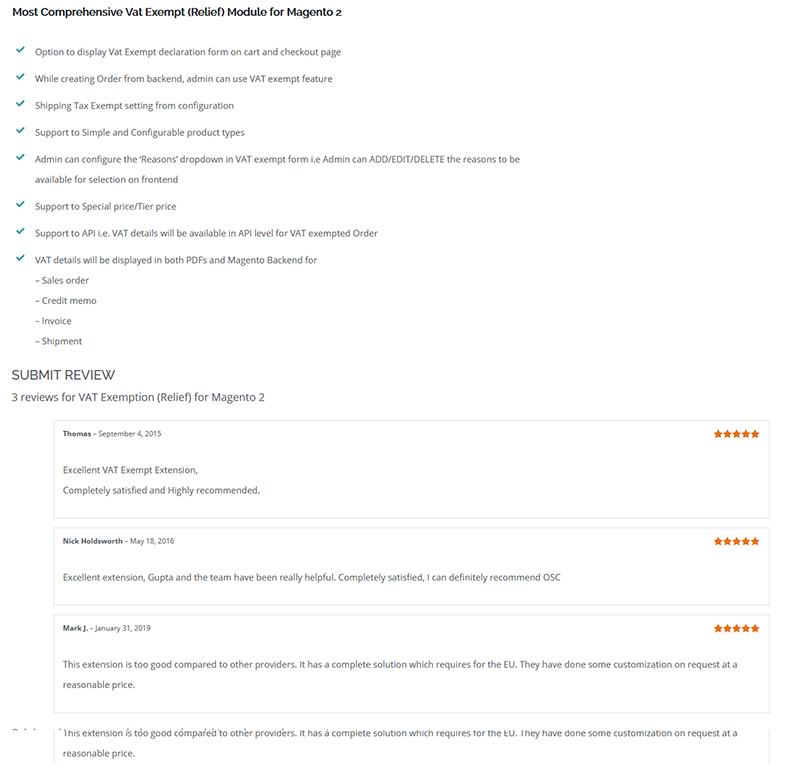How To Write Product Descriptions To Drive More Sales
Sep 02, 2020 | 09 min read
1. QuickRead
A product description is a copy of the ads which describe what a product is and why it is worth buying. The aim of a product description is to give valuable facts to consumers about the product’s functionality and advantages so they’re encouraged to purchase.
Nevertheless, both developers and advertisers are vulnerable to a growing mistake occurring when writing product reviews. Often even skilled copywriters do it: writing descriptions of the product which literally describe your products.
How are they wrong? Since excellent product reviews need to improve your web pages by marketing your goods to real customers, not simply serving as back-of-the-box dispensers of search engine knowledge (through search engine optimization, of course, it can’t be an afterthought).
Let’s look at nine easy ways to attract tourists with product reviews that sell at your online store.
2. How to write product descriptions to inform and persuade customers
Focus on your ideal buyer
If you write a description of the product with a large number of customers in mind, the explanation is wishy-washy, and you end up addressing no one at all.
The best product reviews specifically and explicitly reach the target market. You ask questions and discuss them as if you were having a discussion with them. You pick terms that your target customer uses. You ‘re using the term you.
This is how Think Geek starts the product description of an LED Flashlight.
Do you know what’s sucky about regular flashlights? They only come in two colors: white or that yellowish-white that reminds us of the teeth of an avid coffee drinker. What fun is that kind of flashlight? We’ll answer that: NO FUN AT ALL. Do you know what is fun? Using the Multi-Color LED Flashlight to cast a sickly green glow over your face while telling a zombie story around a campfire. No campfire? Make a fake one with the orange light!
When writing your own descriptions of the items, start by imagining your ideal buyer. What kind of fun does he or she enjoy (if any)? What are the words he uses? Which kind of words does he hate? Is he all right with words like sucky and crappy? Which questions does he ask you to answer?
Imagine how you’d talk to your potential customer if you were selling your goods in the shop, face-to-face. Try to integrate that language into your e-commerce site now, so that you can have a similar online discussion that resonates more profoundly.
Entice with benefits
When we market our goods, we get excited about the individual features and requirements of our goods. We live and breathe our business, our website, our products.
The problem is that our potential customers are not as keen on worldly features and specs. People want to know what’s in it for them — how their biggest pressure points will be answered. That is why the benefits of every feature need to be highlighted.
This is how Method Home describes one of their hand wash gels.
Sometimes the scent of seasonal hand wash is all we need to rouse our holiday spirits. Available in an array of festive fragrances, our naturally derived gel hand wash will leave your hands soft, clean and ready to be tucked into a pair of fair isle mittens. It really is the most wonderful time of the year.
Method Home indicates that the value of their soap is not only that your hands are soft and clean, but that the soap also makes the holiday spirit more cheerful and even more enjoyable.
Take into account the advantages of each of your features. How is your product going to make your consumers feel happier, safer, or more productive? Which are the challenges, bugs, and hassles that your product is helping to solve?
Don’t just sell the commodity, sell the experience.
Avoid Generic phrases
When we’re stuck with words and don’t know what else to add to our product definition, we always add something like “excellent product quality.”
Yeah, that’s an expression. As soon as a potential customer reads excellent product quality, he thinks, well, well, of course; that’s what everybody says. Have you ever heard anyone characterize their product quality as average, not-so-good, or even bad?
You become less convincing as your future customer reads your product description and begins to say yes, yes to himself. To stop this kind of reaction, be as precise as possible. Zappos, for example, does not characterize the price of the pair of shoes as outstanding. Alternatively, they explain every technical detail plus their benefits.
None of the bullet points above mention the quality of the product directly, but each point gives you an impression of quality. Each point also follows an easy pattern of highlighting a feature plus a benefit:
Justify using superlatives
Superlatives sound insincere unless you explicitly show that your product is the best, the simplest or the most advanced.
Amazon discusses why the Kindle Paperwhite is one of the world’s most popular e-readers.
The word patented gives the reader the idea that this is a special item. Amazon goes on to cite a few figures to demonstrate why Paperwhite has great contrast and brilliant resolution; and it has a killer advantage: even in harsh sunshine, Paperwhite offers simple, crisp text and images with no glare.
If your product is genuinely the best, provide clear proof of why this is the case. Otherwise, tone down your copy of the product or quote a customer who says your company is the most amazing product they’ve ever used.
Appeal to the imagination of your readers
Scientific evidence has shown that if people keep a commodity in their possession, their urge to own it increases.
You ‘re selling online, and your web visitors can’t hang on to your goods. Big, crystal clear pictures or videos can help, but there’s also a copywriting trick to increase your desire: let your reader imagine what it would be like to own your product.
Here’s how Think Geek stirs the imagination with a rundown of their multi-tool grilling.
There is a person who is the hero of every BBQ or family cookout and that is the Grill Master. We always looked up to our Mom or Dad as they tended the grill and looked forward to the day when we could be in charge of charring the meat stuff and searing delicious slices of fresh pineapple. Now that we’re adults, it’s finally our turn, and technology has smiled upon us, giving us a tool that is destined to impress.
To practice this copywriting strategy, start a phrase with the word imagine and finish your sentence (or paragraph) by describing how your reader would feel when owning and using your product.
Breakthrough logical mini-story barriers
The use of mini-stories in the product details reduces logical barriers to persuasion strategies. In other words, we forget that we’re going to be sold to.
Wine vendors like the UK-based Laithwaites also have short stories about wine producers.
The Dauré family owns one of the Roussillon’s top properties, the Château de Jau. Around the dinner table one Christmas, they agreed it was time to spread their wings and look to new wine horizons. The womenfolk (Las Niñas) fancied Chile and won out in the end, achieving their dream when they established an estate in the Apalta Valley of Colchagua. The terroir is excellent and close neighbors of the Chilean star Montes winery.
When it comes to telling the story of your goods, ask yourself:
- Who’s making the product?
- What inspired the development of the product?
- What challenges did you need to resolve in order to create a product?
- How was this product tested?
Befriend the senses with words
Restaurants have understood it for a long time: sensory terms boost sales as they enhance brain processing capacity. Here’s an example of the Green and Black chocolate maker.
Green and Black sensory adjectives apply not only to taste but also to sound and touch: crunchy and smooth.
Adjectives are really tricky terms. They just don’t add sense to your sentences, so you’re better off deleting them. Sensory adjectives, however, are power phrases, since they allow the reader to feel a copy when reading.
Dazzle the readers with detailed explanations of the items. Think of words like velvety, smooth, crisp, and light.
The temptation of social evidence
When your site visitors don’t know which product to purchase, they ‘re searching for recommendations as to what to purchase. Consumers are also likely to buy a product with the highest amount of positive reviews. But there are other ways to bring social evidence into the product pages.
Online furniture retailer Made.com hints at the success of the product:
Including a picture of an individual adds authenticity to a quote; it also makes an online business more personal and open, allowing consumers to call for answers to their queries.
The quote above has an extra impact as it defines the product as popular. The popularity argument is further reinforced by a press cut and the expression “Media Favorite.”
Most of the buyers are drawn to buying something that is common. When it comes to the eCommerce website, highlight items that are the customer’s favorites.
To make your description scannable
Is your site design motivating web users to read your product descriptions?
Here’s a perfect example of Innocent Drinks product definition.
Packaging your product descriptions with a clear, scanning design makes it easier to read and more attractive to potential customers.
Here are some areas to focus on when designing yours:
- Enter your web visitor with the headlines;
- Use an easy-to-scan bullet point;
- Include a lot of white space;
- Increase the size of your font to promote readability;
3. A persuasive explanation of the product will still pay you back
Share your knowledge of the product. Tell stories and clarify even the smallest details. Make an effort not to be bland, but to entertain the web visitors with alluring details. Most of all, write with excitement, as the love for goods is contagious.
